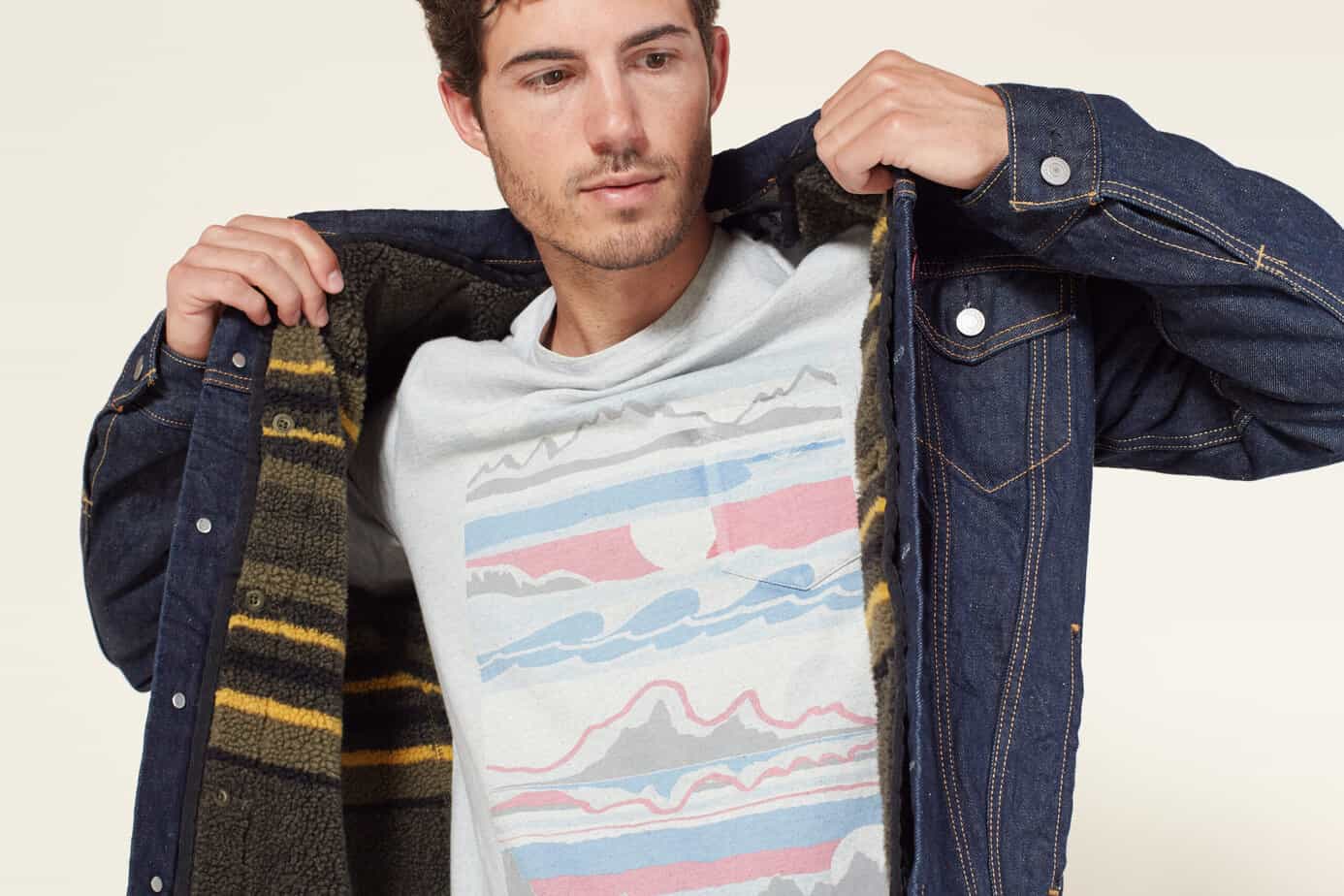In this article, we will explore all there is to know about hemp denim. From its eco-friendly qualities to its durability and versatility, you will discover why hemp denim is becoming a popular choice in the fashion industry. We will also discuss the benefits of hemp cultivation and how it contributes to a more sustainable future. So, if you’re curious about this innovative fabric and its impact, stay tuned!
What is Hemp Denim?
Hemp denim is a type of fabric that combines the classic look and feel of denim with the sustainable properties of hemp. It is made from fibers extracted from the hemp plant, which is a versatile and eco-friendly crop. Hemp denim offers a greener alternative to traditional denim, making it an increasingly popular choice in the fashion industry.
Definition of Hemp Denim
Hemp denim is a textile material that is woven using fibers derived from the hemp plant. It is often used to manufacture jeans, jackets, and other denim garments. The fabric has a similar texture and appearance to traditional denim, but with added benefits in terms of sustainability and durability.
Properties of Hemp Denim
Hemp denim possesses a range of desirable properties that make it an excellent choice for clothing. Firstly, it is known for its durability and strength. The hemp fibers used in denim production are highly resistant to wear and tear, resulting in garments that can withstand frequent use and remain in good condition for a long time.
In addition to its durability, hemp denim is also known for its breathability and moisture-wicking properties. This means that garments made from hemp denim are comfortable to wear and help to regulate body temperature, making them suitable for both warm and cool climates.
Furthermore, hemp denim has a unique texture and appearance that adds character to the garments. The fabric has a slightly coarse feel, which softens over time with wear and washing. This gives hemp denim a distinct and natural look that is sought after by many fashion enthusiasts.
Benefits of Hemp Denim
Environmental Sustainability
One of the key advantages of hemp denim is its environmental sustainability. Hemp is a fast-growing crop that requires minimal water, pesticides, and herbicides to thrive. It also helps to improve soil health by acting as a natural weed suppressant and reducing the need for chemical fertilizers.
Compared to cotton, which is often used in traditional denim production, hemp requires significantly less water to grow. This makes hemp denim a more water-efficient option, particularly in regions where water scarcity is a concern.
Additionally, hemp plants absorb more carbon dioxide from the atmosphere than most other crops, making it a valuable tool in the fight against climate change. By choosing hemp denim, individuals can contribute to reducing their carbon footprint and supporting sustainable farming practices.
Durability and Longevity
Hemp denim is renowned for its durability and longevity. The fibers used in its production are incredibly strong, making garments resistant to tearing and fraying. This means that hemp denim jeans, jackets, and shirts can withstand even the most demanding activities and retain their shape and integrity over time.
Unlike some synthetic fabrics, which tend to degrade quickly, hemp denim continues to soften and mold to the body with each wear and wash. This allows the garments to develop a unique, personalized fit and feel, making them even more comfortable and enjoyable to wear.
The combination of durability and longevity makes hemp denim a wise investment for those looking for high-quality clothing that will last. By choosing hemp denim, individuals can reduce waste by avoiding the need for frequent replacements and contribute to a more sustainable fashion industry.
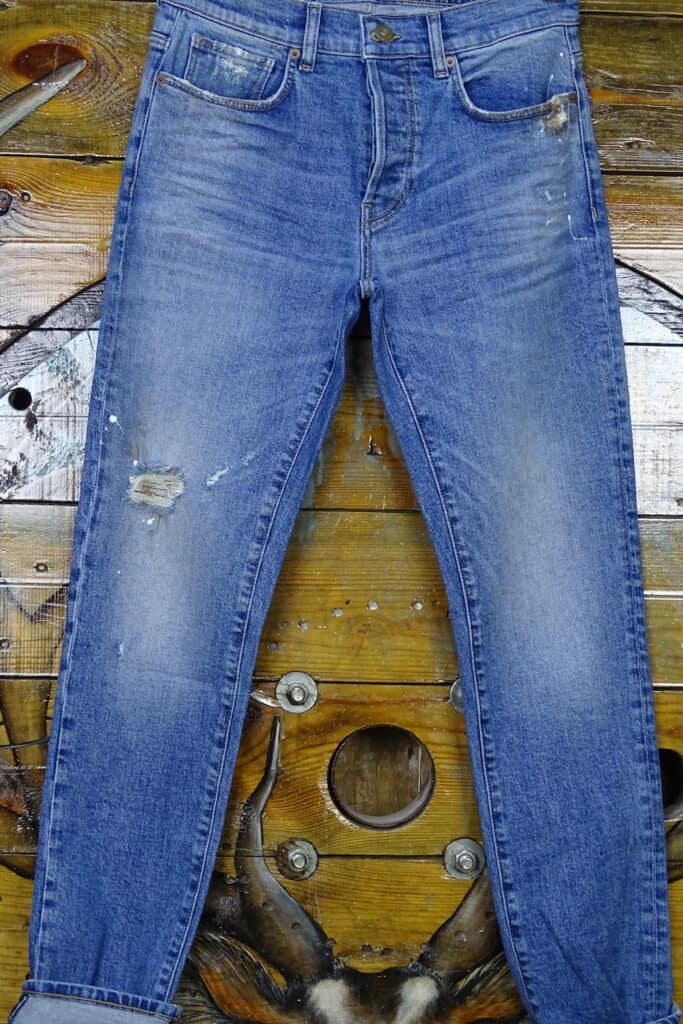
Hemp Denim Production Process
Harvesting and Extraction
The process of producing hemp denim begins with the cultivation and harvesting of the hemp plants. Hemp is typically grown in a field, with the plants reaching maturity within three to four months. Once the plants have matured, they are harvested by cutting the stems at the base.
The harvested hemp stalks are then dried and prepared for extraction. The extraction process involves separating the fibers from the rest of the plant material. This can be done through a mechanical process that breaks down the stalks, or through a chemical process that dissolves the non-fiber components.
Fiber Manufacturing
After the extraction process, the hemp fibers are cleaned and processed to remove any impurities. This step is crucial in ensuring the quality and strength of the fibers. The cleaned fibers are then spun into yarn, which is used to weave the denim fabric.
The manufacturing of hemp denim yarn can be done using both traditional spinning methods and advanced machinery. The choice of method depends on the desired texture, strength, and appearance of the final fabric. Once the yarn is ready, it is ready for the weaving process.
Weaving and Dyeing
The weaving process is when the hemp denim fabric is created. The yarn is loaded onto a loom, and a weaving pattern is selected. This pattern determines the structure and appearance of the fabric, including the weave density and the presence of any patterns or designs.
Once the fabric is woven, it is then ready for dyeing. Hemp denim can be dyed using a variety of natural and synthetic dyes. Natural dyes, such as indigo, are often preferred for their environmentally-friendly properties. The dyeing process involves immersing the fabric in a dye bath and allowing it to absorb the color, resulting in the classic blue shade associated with denim.
Comparing Hemp Denim to Traditional Denim
Strength and Durability
Hemp denim surpasses traditional denim in terms of strength and durability. Hemp fibers are known to be highly resistant to wear and tear, making garments made from hemp denim less likely to develop holes or fraying over time. This means that hemp denim clothing can withstand heavy use and remain in good condition for longer periods.
In contrast, traditional denim is often made from cotton fibers, which are not as strong as hemp. Cotton denim may wear out more quickly, especially in areas of high stress such as knees and hems. By opting for hemp denim, individuals can enjoy clothing that lasts longer and reduces the need for frequent replacements.
Softness and Comfort
While hemp denim may initially have a slightly coarse feel, it softens with each wear and washing. The fabric becomes more comfortable over time, molding to the body and providing a snug fit. This development of softness and comfort is a unique trait of hemp denim and is appreciated by those who value both style and comfort in their clothing.
In comparison, traditional denim can be stiff and rigid, particularly when it is new. It may require several washes and wears to achieve the desired level of softness and flexibility. With hemp denim, this process is accelerated, allowing individuals to enjoy comfortable garments from the start.
Eco-Friendliness
Hemp denim outshines traditional denim when it comes to eco-friendliness. Hemp is a renewable and sustainable crop that requires fewer resources to grow. It consumes less water, requires fewer pesticides and fertilizers, and has a smaller carbon footprint compared to cotton.
Cotton farming, on the other hand, is notorious for its heavy use of water, pesticides, and synthetic fertilizers. It also contributes to soil degradation and water pollution. By choosing hemp denim, individuals can support more sustainable farming practices and minimize their impact on the environment.
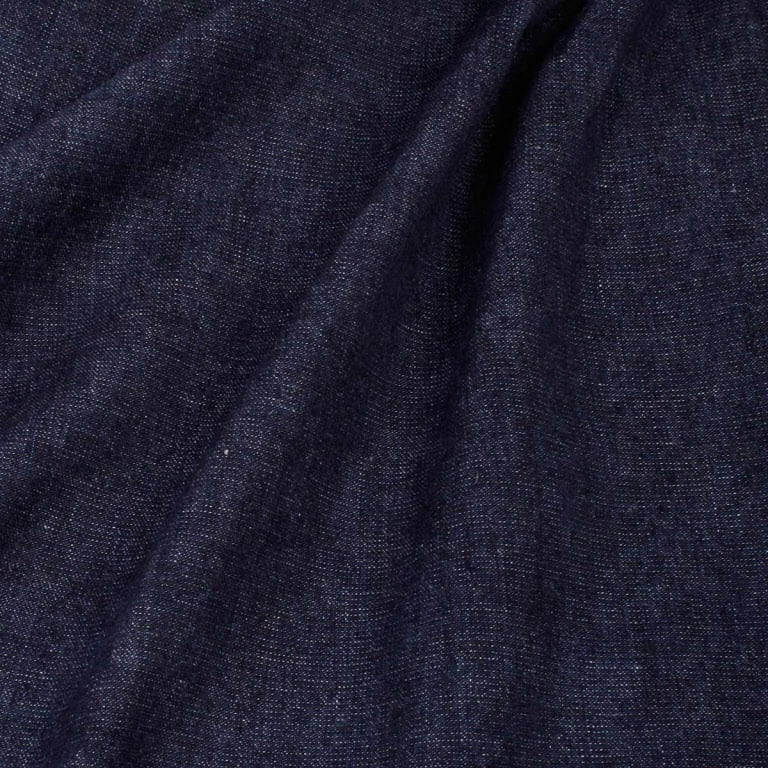
Hemp Denim Products
Hemp Jeans
Hemp jeans are perhaps the most popular hemp denim product. They offer the timeless style and versatility of traditional denim, with all the added benefits of hemp. Hemp jeans are durable, comfortable, and environmentally-friendly, making them a great investment for those seeking sustainable fashion options.
Hemp Jackets
Hemp jackets are another popular hemp denim product. These jackets provide both style and functionality, making them suitable for various occasions and seasons. Hemp denim jackets are known for their durability and ability to withstand the elements, making them a reliable and long-lasting outerwear choice.
Hemp Shirts
Hemp shirts offer a comfortable and breathable alternative to traditional cotton shirts. The natural properties of hemp make them perfect for warm weather, as they help to regulate body temperature and wick away moisture. Hemp shirts are also highly durable and can withstand regular wear, making them a versatile addition to any wardrobe.
Caring for Hemp Denim
Washing and Drying
To care for hemp denim, it is important to follow proper washing and drying techniques. Hemp denim is best washed in cold water with a mild detergent. Avoid using bleach or harsh chemicals, as they can damage the fabric and strip away its natural properties.
After washing, hemp denim can be air-dried or tumble-dried on a low heat setting. It is important to avoid high heat, as it can cause shrinkage and wrinkling. Air-drying is the most environmentally-friendly option and helps to prolong the life of the garment.
Stain Removal
If stains occur on hemp denim, it is important to act quickly to prevent them from setting in. For small stains, spot cleaning with a mild detergent and water can often do the trick. Gently scrub the stained area using a soft brush or cloth, and rinse thoroughly.
For tougher stains, pre-treating with a stain remover or soaking in a mixture of water and detergent can help. It is important to read the garment care instructions and test any stain remover on a small, inconspicuous area before proceeding. Once the stain is treated, the garment can be washed as usual.
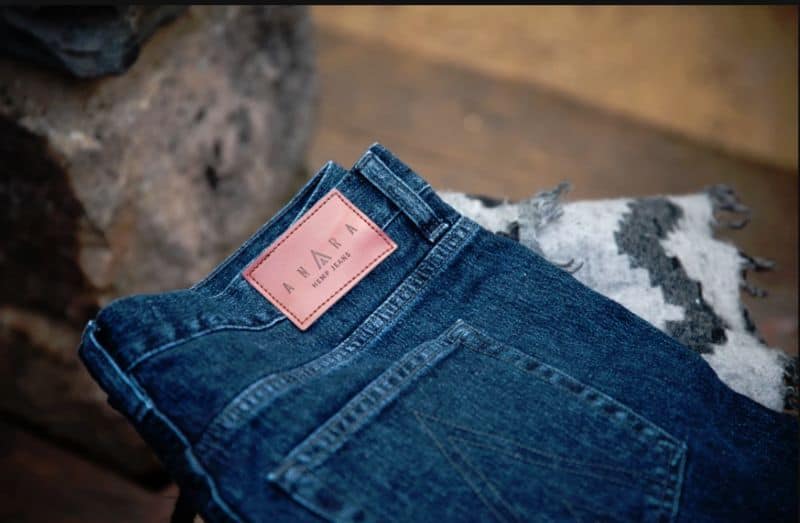
Fashion Trends with Hemp Denim
Celebrities and Designers Embracing Hemp Denim
Hemp denim has gained popularity among celebrities and fashion designers who prioritize sustainability and eco-consciousness in their wardrobe choices. Many celebrities, such as Emma Watson and Leonardo DiCaprio, have been spotted sporting hemp denim jeans and jackets on red carpet events and in their everyday lives.
Fashion designers are also incorporating hemp denim into their collections, showcasing the fabric’s versatility and style. By choosing hemp denim, designers can offer their customers a greener alternative to traditional denim, contributing to a more sustainable fashion industry.
Hemp Denim In Fashion Shows
Hemp denim has made appearances in various fashion shows, showcasing its potential as a fashionable and sustainable fabric. Designers have incorporated hemp denim in their collections, presenting unique and innovative designs that combine style with eco-friendliness.
Fashion shows featuring hemp denim garments have helped to create awareness and generate interest in sustainable fashion. They serve as a platform to showcase the versatility and potential of hemp denim, inspiring both designers and consumers to embrace more sustainable choices.
Challenges and Limitations
High Production Costs
One of the main challenges faced by the hemp denim industry is the high production costs compared to traditional denim. The cultivation, extraction, and manufacturing processes involved in producing hemp denim require specialized equipment and expertise, resulting in higher production expenses.
However, as demand for sustainable fashion continues to grow, economies of scale and advancements in technology are expected to drive down the production costs of hemp denim. This will make it more accessible and affordable for both manufacturers and consumers, contributing to the wider adoption of hemp denim in the fashion industry.
Limited Availability
Another challenge faced by the hemp denim industry is the limited availability of the fabric. Despite its growing popularity, hemp denim is still not as widely produced or stocked as traditional denim. This can make it more challenging for consumers to find hemp denim products in their preferred styles and sizes.
However, with the increasing demand for sustainable fashion, more brands and retailers are starting to offer hemp denim options. This trend is expected to continue, leading to a greater variety and availability of hemp denim products in the future.
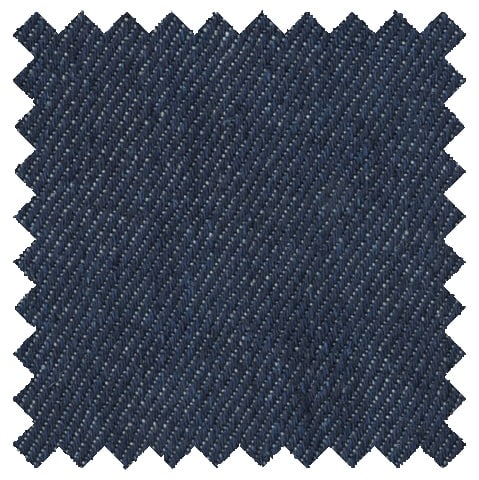
Hemp Denim and Sustainability
Reducing Water Consumption
Hemp denim contributes to water conservation in several ways. Firstly, the hemp plant itself requires significantly less water to grow compared to cotton, reducing the strain on water resources. Secondly, the production process of hemp denim uses less water compared to traditional denim production, as fewer dye baths and washes are required.
By choosing hemp denim, individuals can support water conservation efforts and reduce their overall water footprint. This is especially important in regions where water scarcity is a pressing issue and where sustainable farming practices are essential for long-term ecological health.
Less Chemical Usage
Hemp denim production also involves less chemical usage compared to traditional denim production. Hemp plants are naturally resistant to pests and diseases, reducing the need for synthetic pesticides and herbicides. Additionally, the natural fibers extracted from hemp require fewer chemical treatments during the manufacturing process, further reducing the environmental impact.
By opting for hemp denim, individuals can minimize exposure to harmful chemicals and support the development and adoption of more sustainable manufacturing practices in the fashion industry.
Conclusion
Hemp denim offers a sustainable and stylish alternative to traditional denim. With its durable and long-lasting properties, hemp denim garments can withstand heavy use and remain in good condition for extended periods. The environmental benefits of hemp cultivation and production make hemp denim an eco-friendly choice for conscious consumers.
As the demand for sustainable fashion continues to grow, hemp denim is becoming increasingly popular among celebrities, designers, and consumers alike. With advancements in technology and increasing availability, hemp denim is set to become more accessible and affordable, paving the way for a more sustainable future in the fashion industry.
By embracing hemp denim, individuals can contribute to reducing their environmental impact, supporting sustainable farming practices, and enjoying high-quality and comfortable clothing that stands the test of time. Hemp denim represents the future of fashion – a greener, more stylish, and more conscious choice for all.
Recent Posts
Discover how bubble hash is rated on a 1 to 6 scale. From texture and color to aroma and potency, learn the key factors that determine the quality of bubble hash. Whether you're a seasoned cannabis...
Looking to learn about the most popular style of hash? This article explores the different types, from traditional to bubble hash, and reveals the people's favorite. Join us on a journey through the...

